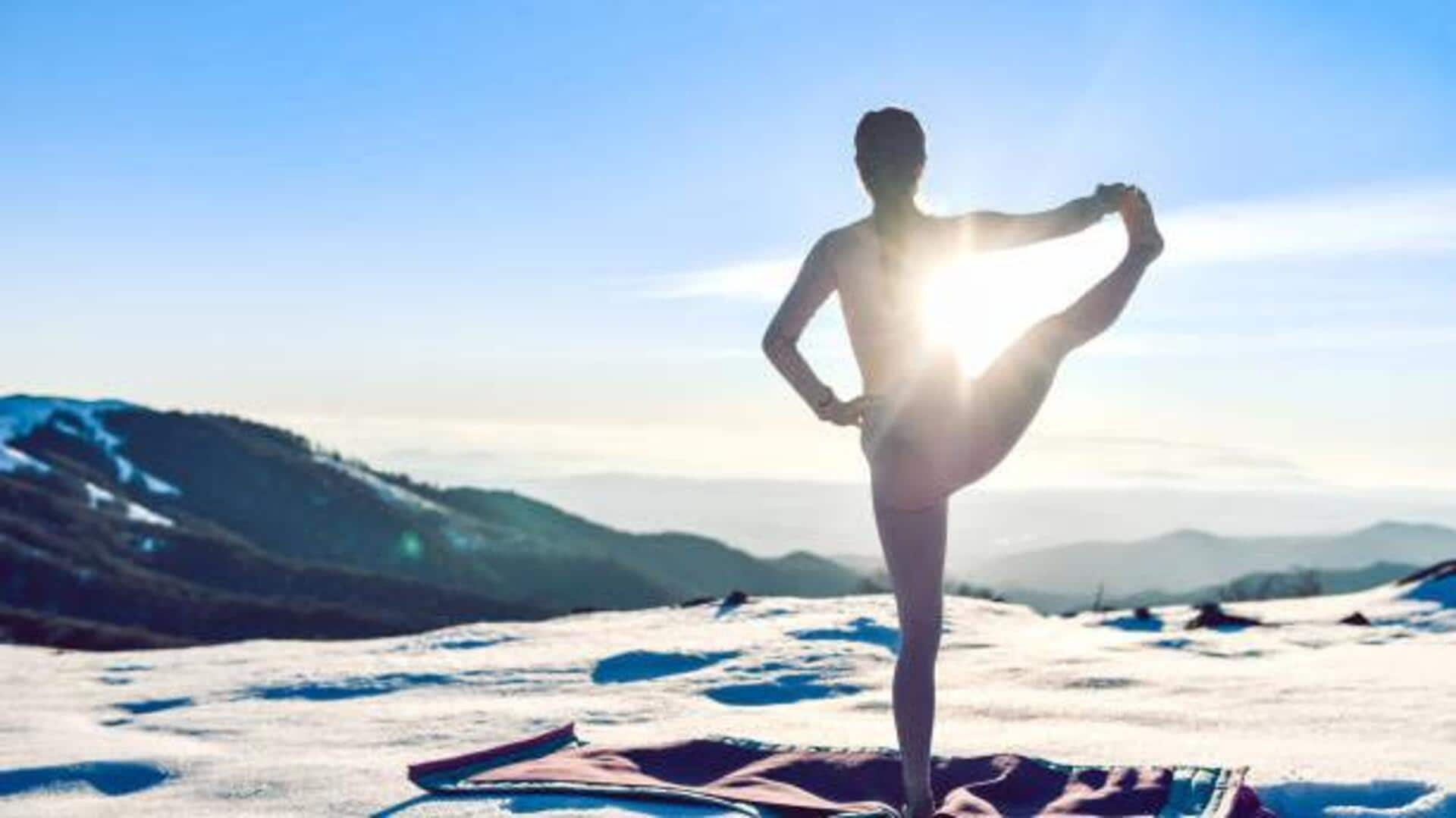
Yoga on snowy peaks: Gear, safety, and more
What's the story
Snow-ga brings together the fun of yoga and snow, appealing to adventure junkies from all over the world. This practice, done on snow-clad peaks, gives a unique spin to the regular yoga. It tests participants' balance and flexibility in the cold, making them stronger physically and mentally in the lap of nature.
Equipment
Choosing the right gear
Choosing the right gear is important for a successful snow-ga session. Layered clothing keeps your body warm while letting you move around freely for different poses. Waterproof gloves and boots are necessary to keep your extremities dry and warm. A good-quality yoga mat with a good grip keeps you from slipping. Investing in thermal wear can really make you comfortable during long sessions in the cold.
Destinations
Ideal locations worldwide
Several places across the globe make for the perfect snow-ga adventure. The Swiss Alps present breathtaking views with their towering peaks and calmness. The Rocky Mountains in North America present varied terrains for all levels of expertise. Japan's Hokkaido region is another favorite spot with its powdery snow and peaceful environment, ideal for a quiet yoga practice.
Wellness
Health benefits of snow-ga
Apart from the benefits of normal yoga, snow-ga also gives you plenty of health benefits. The cold weather increases your circulation, which means, your cardiovascular health improves and you also burn 30% more calories. Balancing on an uneven snowy terrain improves your core strength and stability, and your overall coordination. Further, natural light during winters can help you combat seasonal affective disorder by boosting serotonin levels.
Precautions
Safety tips for practicing snow-ga
Safety should be your priority while participating in snow-ga activities. Always check weather conditions before heading out, to avoid extreme temperatures or storms that could risk frostbite or hypothermia. Beginners can also join guided sessions led by experienced instructors, who can provide valuable tips on maintaining balance and preventing injuries during practice on icy surfaces.